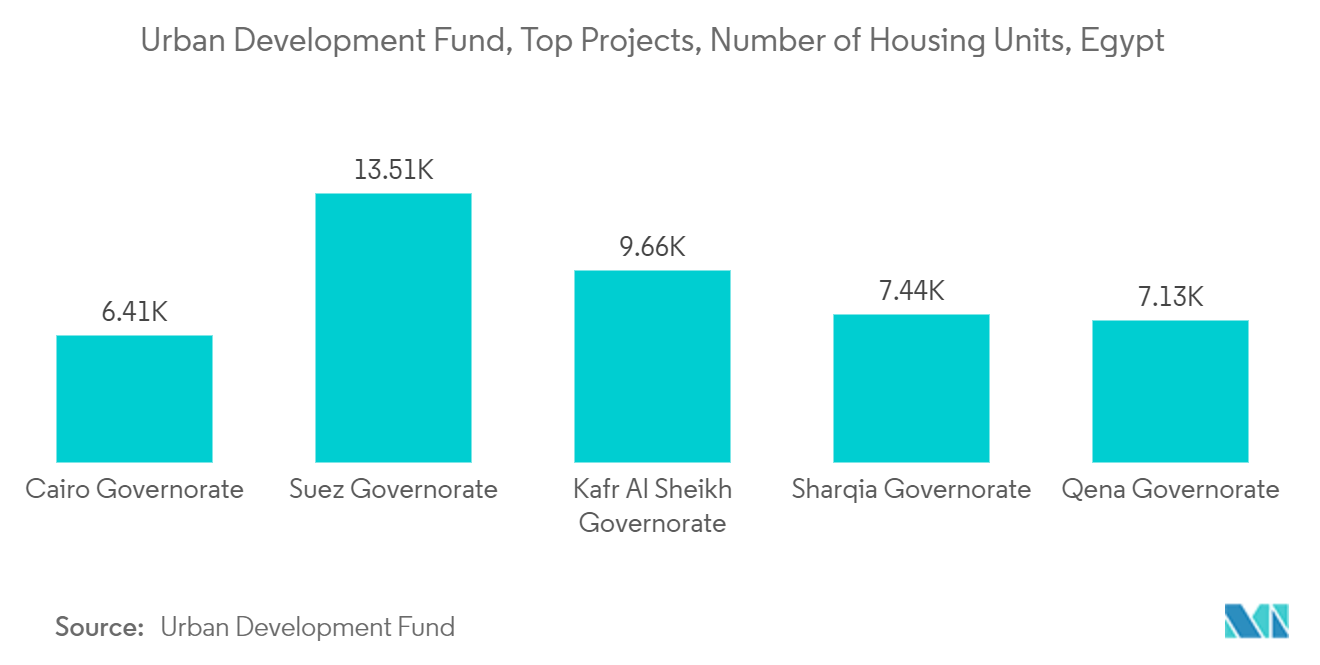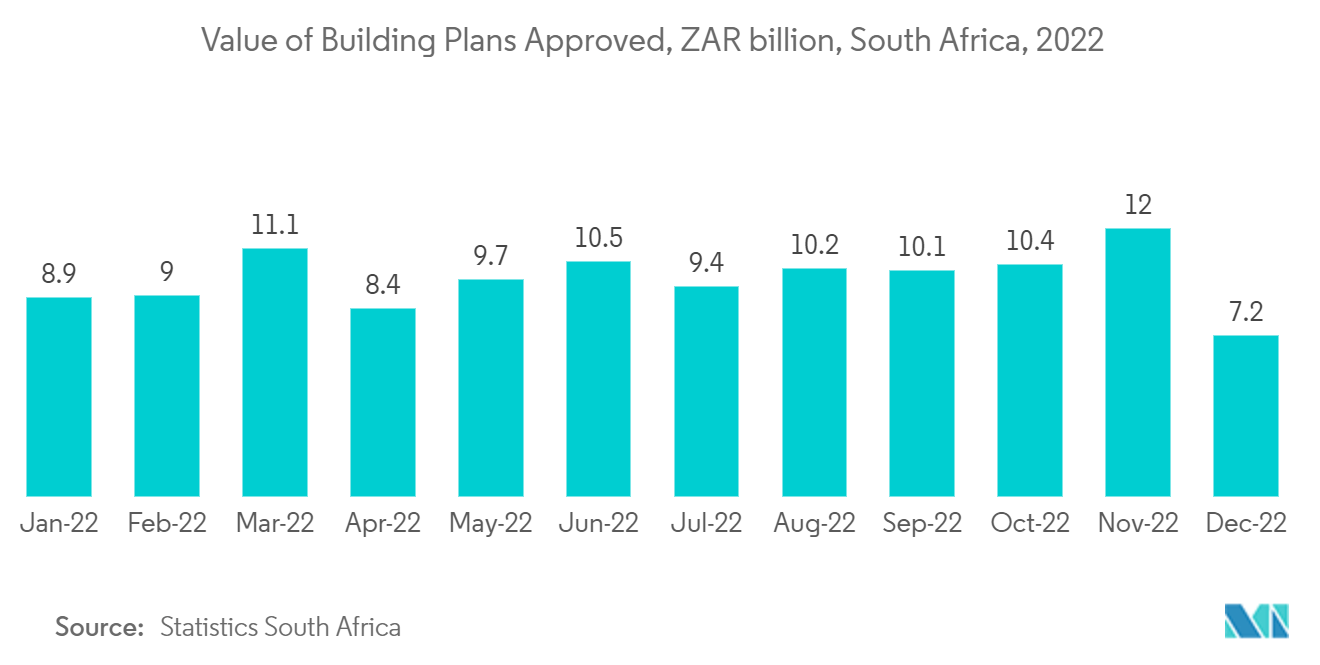Market Trends of Africa Green Cement Industry
Residential Construction to Dominate the Market
- Green cement is gaining traction for the construction of green buildings as it is eco-friendly, consumes industrial waste, reduces carbon dioxide emissions, and requires less energy for production.
- In addition, green cement is highly durable and long-lasting and exhibits excellent strength, durability, resilience, crack resistance, high corrosion resistance, and low chloride permeability.
- In major economies like South Africa, Egypt, and Nigeria, residential construction is growing rapidly due to urbanization. The countries have launched various residential construction projects in recent times.
- Egypt's Urban Development Fund (UDF) launched a nationwide mega urban housing project in December 2022, with a total investment of EGP 600 billion (USD 19.39 billion). The project involves the development of 230 urban sites in the capitals of the governorates and major cities of the country, with a combined area of more than 14,422 acres, and is expected to be completed in 5 years.
- The Urgent Project comprised 61,000 units housing units in 13 governorates (Cairo-Suez-Damietta- Kafr El Sheikh- Gharbia-Qalyubia-Fayoum-Sharqia-Menoufia-Qena-Minya-Sohag-Dakahlia) at a cost of EGP 120 billion (USD 4.9 billion).
- According to the World Bank estimates, Nigeria will need an investment of USD 3 trillion in infrastructure to reduce the infrastructure deficit in the country. As part of a 30-year infrastructure plan (National Integrated Infrastructure Master Plan), which aims to bring Nigeria’s infrastructure stock to 70% of the GDP level by 2043, the government of Nigeria has begun to take steps towards reducing the infrastructure deficit through increased construction spending.
- According to the Federal Mortgage Bank of Nigeria (FMBN), Nigeria’s housing deficit was at 28 million units as of January 2023, and the country needs to construct a minimum of 700,000 houses per year to close this gap. The Central Bank of Nigeria (CBN) has estimated an investment of USD 46.7 billion will likely be needed to fund the deficit.
- Thus, the increased investment in the residential sector in the African region will likely promote the demand for green cement in the forecast period.

South Africa to Dominate the Regional Market
- South Africa is the largest construction market in the African region. It is home to a few green cement producers, such as Lafarge, a subsidiary of Holcim, PPC Cement, and Afrisam South Africa.
- The construction of green buildings has also been on the rise in the country, with a few investments and partnerships announced:
- In April 2022, the International Finance Corporation (IFC), the World Bank Group’s private sector financing division, granted a USD 38 million (ZAR 600 million) line of credit to Business Partners. This South African company financed and supported small and medium-sized enterprises (SMEs). The company was expected to provide loans of between ZAR 500,000 and ZAR 50 million (USD 31,000 and USD 3 million) to SMEs to construct green, certified commercial buildings and renovate existing commercial buildings in terms of energy consumption.
- In January 2022, The Green Building Council South Africa (GBCSA) and the UK-based Carbon Trust signed an agreement to improve buildings' energy efficiency in South Africa. The partnership between the two organizations is funded by the UK's Partnering for Accelerated Climate Transitions (PACT) program. The scheme is already being piloted in 30 South African buildings and is based on energy performance certificates (EPCs), a regulation that has been implemented since 2020.
- Moreover, residential and commercial construction in the country also showed positive growth in 2022. According to Statistics South Africa, the value of construction projects approved by the government has increased by 7.7% in 2022 overall.
- The value of residential construction projected accounted for the majority share with ZAR 62.2 billion (USD 3.33 billion), whereas non-residential construction accounted for a value of ZAR 22.1 billion (USD 1.19 billion). The value approved for additions and alterations in residential and non-residential buildings was ZAR 33.1 billion (USD 1.78 billion).
- In terms of growth, the non-residential recorded the highest growth with 17.2% followed by additions and alterations in residential and non-residential buildings with 11%.
- Overall, the outlook for the construction industry and green buildings appears to be positive and will complement the growth of green cement in the country.


